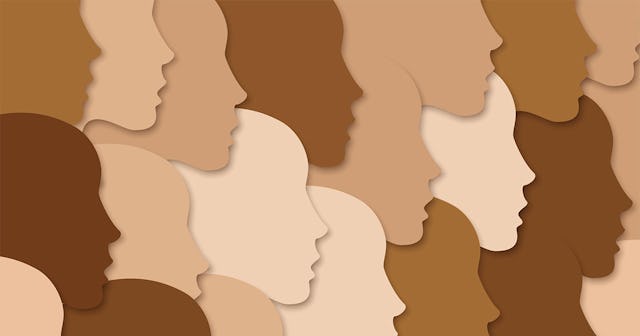How My Wife And I Talk To Our Multiracial Kids About Race

What rests in a person’s heart means more to me than what their race is. When I make a person my friend, I do not look at their race before deciding whether they are worth my time or not, and this is what we are teaching our kids. It is a person’s value system, if they are honest and kind, which determines how they will treat me. As we look at a divisive country, broken friendships, and disconnected families because of this election, we are having conversations with our kids about not only what it means to be a good friend, but what it means to look at a person’s heart over their race.
I was ecstatic when Crayola released their skin tone crayons; I immediately went out and purchased a box to bring home to my five-year-old twins. They could finally color pictures of little girls and of our family that physically looked like us. Between the princess Disney movies they watched and the princess books they chose at the library, with preschool teachers who did not look like them and friends who spoke Spanish, they were curious as to why their own curly hair did not match the straight blonde hair of their best friends in their preschool class. It took them six months to inquire about why the white tone of their favorite preschool teacher was different than their own. We waited for them to come to us, and when they did, we simply said, “Everyone is born different, with different skin colors. Even within our own family, we all have different skin colors. They are not exactly the same, right?”
Crayola
Using their preschool teacher as an example to drive home our point, together we reflected on how she treated them. These reflections gave us solid examples of how she made them feel. There was a reason she was their favorite: She listened to them. She spent time with them. She let them explore their interests. She played with them. She cared for them. She possessed the same traits we wanted to impart on our kids, so it was easy to explain it to them in this way.
What every child knows is how people make them feel — and at the end of the day, this is what matters most for them. Then there is the inevitable, the questions they ask will become more challenging to answer, especially about race. In an article for National Geographic, writer Heather Greenwood Davis notes, “Developing empathy, compassion, and a sense of justice at an early age helps kids grow into adults who want to help make the world a better place. For parents, that often means taking a deep breath and having those tough conversations about race and racism.”
Oleksandr Siedov/Getty
We were able to package these sometimes difficult conversations about race into talks that gave rise to a bigger lesson for our kids. When we’re all trying to figure out how to define for our kids what is happening in our world, their world, we should start with what they know and where they are in their own development. Greenwood Davis suggests, “If you hear your child expressing an idea about a group of people that they don’t realize is prejudicial, engage them in an age-appropriate conversation about it. For younger children, you might center the conversation around why the words are hurtful and how they might make someone feel. And though most older kids have been socialized not to make blatantly racist comments, they can crop up.”
We must continue to communicate with our kids about what it means to look at a person’s values and who they are on the inside. While skin color and race do matter, especially in our current social and political climate, as parents when we talk about progress — when we demand justice for those who have been looked down upon because of their race — we must still teach our kids to look at someone’s heart, and consider how their own actions are making people feel. And as adults, we can be reminded to do the same.
This article was originally published on